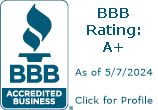I cannot rave enough about the services April provides! I have been using My Business Partner for about a year now and they have helped me so much in organizing my business with QuickBooks, planning, decision making and much much more.
As a single Owner/Operator I truly feel that I have a partner in growing my business with April and her team. They are always reachable and generous with their time. From accounting questions, to labor law changes, setting up your business or multiple branches of your business, they have helped me solve and organize it all.
April has truly learned the ins and outs of my business so she can understand my needs instead of making my business fit into a cookie cutter mold. I would recommend My Business Partner to any business looking for help with their books!
~Sabrina, owner of Baby Doll Hair Salon


